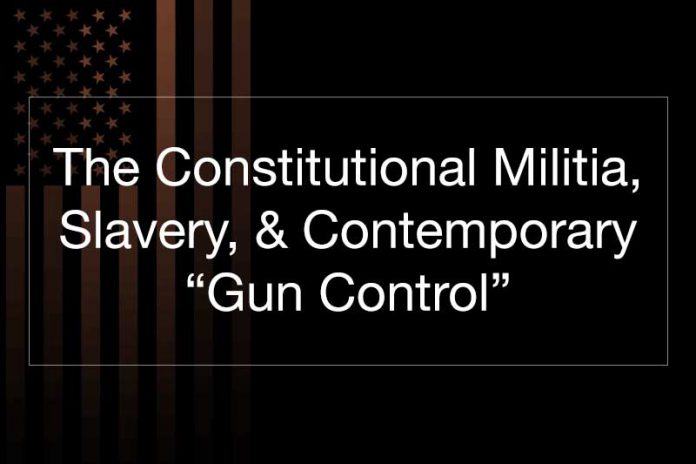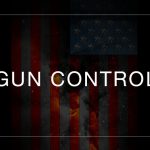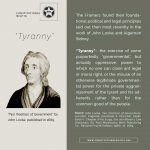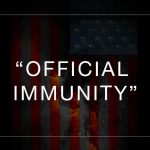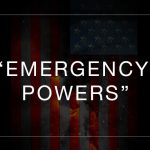Last Updated on January 17, 2021 by Constitutional Militia
Studying the Colonial and State Militia Acts of the 1600s and 1700s reveals a stark divergence between the principles of the constitutional “Militia of the several States” and the principles of contemporary “gun control”. Not entirely obvious, though, yet crucial to the survival of freedom in America, is what this divergence represents.
The fundamental operational principle of the constitutional Militia is that everyone who is physically able is required to be armed—with his own personal military-grade firearm, ammunition, and necessary accoutrements in his own possession at home—and ready to repel invasions, suppress rebellions and insurrections, and enforce the laws, especially against usurpation and tyranny.
The Colonial and State Militia Acts of the pre-constitutional period generally did exempt from routine Militia musters and training some people who held high public offices or who engaged in particularly important professions or trades. Nonetheless, most of these individuals were required by law to arm themselves and to appear for service during “alarms”. For a typical example, Georgia’s Militia Act of 1755 mandated that
every able Male person from the age of Sixteen to Sixty years who has once resided & shall be [within] this province for the space of Three Months (Slaves excepted) is * * * lyable to bear Arms * * [17] * except the several persons herein after particularly mentioned who shall be excused and exempted from appearing at General and Ordinary Musters, * * * (that is to Say) all * * * members of his Majesty’s Council & their Officers, * * * the members of the Assembly * * * and their Officers, the Chief Justice & Justices of the Court of common Pleas, the Attorney General, the Attorneys of the said Court, the Clerk of the Crown and Pleas, the provost Marshall the Master and Register of the high Court of Chancery * * * , the Judge of the Vice Admiralty, the Officers of his Majesties Customs, the Surveyor General of his Majesties Lands in this province, the Clergy, the Chatechist of Savannah * * * , [the] Public Treasurer, powder receiver, Comptrollers, Waiters and Commissary, * * * his Majesties Justices of the peace * * * , Provided, that all the[se] persons * * * (the members of his Majesty’s Honorable Council and of the Assembly, and their Officers & the pilots and Ferrymen only excepted) shall in the Time of Rebellion, Insurrection or Actual Invasion, attend under the proper Colors of the Company * * * , completely Armed and Furnished * * [18] * , on pain of Forfeiting the Sum of Ten pounds Sterling.[1]
These special exemptions, however, were matters of statutory grace, not of legal right. Militiamen were not volunteers. “[E]very able Male person from the age of Sixteen to Sixty years” was required to serve. And to be excused required a special reason recognized by the legislature.
Georgia’s Militia Act of 1755 illustrates the general requirements enforced throughout the Colonies and independent States, that:
the Captains * * * shall * * * enlist and enroll, the names of all the Male Inhabitants of this province, from the Age of Sixteen to Sixty years * * , and th[os]e persons * * * shall be obliged to appear at Musters * * * .
* * * [E]very person lyable to appear and bear Arms at any Muster, exercise or training * * * shall constantly keep * * * at his usual place of abode, and bring with him at such muster Exercise or training one Gun or Musquet fit for Service, one Cartridge Box with at least nine Cartridges filled with good Gun powder and Ball that shall fit his Piece a Horn or Flask containing at least [12] a quarter of a pound of Gun Powder and a Shott Pouch with Bullets proportionable to the Gun powder, * * * one Worm, and Picker, four spare Flints, a Bayonet Sword or hatchet of the fitness and sufficiency of which Arms, every Commanding Officer of the Company * * * is * * * to be the Judge.
* * * [I]n case any person lyable to appear and bear arms * * * shall neglect or refuse to appear completely armed and furnished * * * at any General Muster * * * every Such person shall forfeit & pay a Sum not exceeding ten Shillings Sterling, and in case any such person shall neglect or refuse to appear * * * at every ordinary Muster every such person shall forfeit, and pay a Sum not exceeding five Shillings * * * .
* * * [I]t shall and may be Lawfull for the Commission Officers * * * , Six times in a year, * * * at any convenient time of the Day to repair to the places of residence, of any person or persons, as well those persons who are obliged to appear, on alarms, as to other persons lyable to bear arms, * * [13] * and to demand a sight of their Arms, Furniture, Ammunition and Accoutrements * * * , and in case persons, shall refuse to produce, any such Arms, Furniture, Ammunition and Accoutrements, or to Suffer the same to be viewed and inspected, or if when produced the said Officers shall find the same defective * * * [they may] Fine every person offending * * * in any Sum not exceeding five Shillings Sterling * * * .[2]
As this statute shows, the duty to keep and bear arms had no limitation or qualification, but obliged every male inhabitant from 16 to 60 years of age to arm himself and appear for musters, training, and service in the field. The lower and upper boundaries of age the statute set on the duties to arm, muster, train, and serve were intended only to reflect practical presumptions about physical ability and psychological maturity, not to impose arbitrary discriminations. Georgia’s Militia Act specifically called to service men from 16 to 60 years of age with the expectation that they would prove both capable in skills and sufficient in numbers to do what was required of them. But those boundaries were never meant to be exclusive. Neither in Georgia nor in any other Colony or independent State did any Militia Act ever decree that any free and loyal person under 16 or over 60 (or whatever the particular ages happened to be) could not possess a firearm, ammunition, and accoutrements suitable for Militia service (or any other legitimate purpose, for that matter). Or that anyone between 16 and 60 who was physically unable to train or serve in the field could not possess a firearm. Or that anyone over 60 could not volunteer for Militia service, or would never be required to serve in case of an “alarm”. Or even that women could not possess—and, if absolutely necessary in an emergency, use—firearms for the common defense or self-defense.
The Militia Acts of pre-constitutional times mandated no licensing requirements for the inhabitants’ private possession of arms. They established no general control over firearms by public officials—to the contrary, firearms were required to be in every man’s own hands, “at his usual place of abode”. No one worried about being punished for possessing a firearm and ammunition—rather, penalties attached for not having them always available, in good working order. No one feared that public officials would conduct house-to-house searches to find and take away armaments—instead, “a sight” could be demanded only to make sure that every man actually had immediately accessible to him at home a suitable, functioning firearm and ammunition for his own personal use. And public officials were concerned, not that the people possessed too many firearms, but that they had too few.[3]
None of this was extraordinary, in the political context. The pre-constitutional Militia Acts enforced the duty of each individual to keep and bear arms which derived from, and put into general effect for the benefit of society as a whole, the unalienable right of each individual to keep and bear arms for personal self-defense—what the Founding Fathers’ legal mentor, William Blackstone, called “the natural right of resistance and self-preservation, when the sanctions of society and laws are found insufficient to restrain the violence of oppression”.[4] Indeed, if Americans had enjoyed no right to keep and bear arms—that is, no legal claim to arm themselves against the contrary commands of public officials—they could never have imagined themselves entitled, empowered, or enabled to employ arms to suppress, oppose, or even deter usurpation and tyranny.
The principle in operation was that the only truly free men are armed men, because an armed citizenry is necessary to maintain a free society. As the Second Amendment came to summarize the idea, “[a] well regulated Militia, being necessary to the security of a free State, the right of the people to keep and bear Arms, shall not be infringed”. A “free State” is one with “[a] well regulated Militia”; and “[a] well regulated Militia” is one composed of all “the people” actually exercising their “right * * * to keep and bear Arms”, with no “infringe[ment]” by public officials. Arms in every citizen’s personal possession are the precondition for freedom, freedom the hoped-for consequence of such possession (if the Militia do their part). And public officials can do nothing to interfere with such possession, being limited in their authority to ensuring that, through and in the Militia, everyone obtains and maintains private possession of firearms suitable for defending individual liberty and social order.
In Georgia, however, as in most Colonies and independent States, not everyone was free to possess firearms, because not everyone was free in other ways. As the Militia Act of 1755 itself recited, “every able Male person from the age of Sixteen to Sixty years who has once resided & shall be [within] this province for the space of Three Months (SLAVES EXCEPTED) is * * * lyable to bear Arms”. Thus, the emphasized words turn the researcher to the Colonial law of slavery.
Georgia’s Slavery Act of 1765, for example, explained itself on the rather blatant theory of legalistic oppression that
Slavery has been introduced and allowed in His Majesty’s Colonies in America and * * * Power over such Slaves ought to be settled and limited by positive Laws, so that the Slaves may be kept in due Subjection and Obedience * * * [.][5]
The Act went on to provide
The connection between theory and practice in this statute was as inevitable as it was obvious. Those “kept in due Subjection and Obedience” could not be suffered to possess firearms without strict supervision and restraint, lest they attempt to employ those firearms to free themselves from that “Subjection and Obedience”. So, slaves’ access to and use of firearms were strictly “licensed” or otherwise controlled, in order
- to minimize the number of firearms available to them;
- to keep track of which slaves had access to which firearms and for what purposes;
- to limit the uses to which slaves could put firearms;
- to make sure that the selfsame firearms made available to slaves during the day were returned to their masters’ control “at Night” (when, presumably, the danger of insurrection was most acute); and
- to subject to seizure all unlicensed firearms, and any firearms possessed outside of permissible places or during prohibited periods.
Under some circumstances, though, even slaves could be armed for service with the Militia during emergencies. For example, Georgia’s Militia Act of 1755 allowed
[t]hat [certain] Slaves [whom their masters deemed particularly reliable] * * * shall in Time of General Alarm and Actual Invasion * * * & not otherwise be armed by the respective Owners * * * with one sufficient Gun, one Hatchet, powder Horn and Shott Pouch, with Ammunition of powder and Bullets, for twenty Rounds, and Six Spare Flints, and Shall be Sent * * * to the place of Randezvous of the respective Company’s * * * and instead of a pecuniary fining, such Slaves for Breach or neglect of duty, shall be subject to * * * Corporal punishment * * * .[7]
And meritorious service was rewarded. For
This remained the practice on the eve of the War of Independence.[9]
Nonetheless, armed service with the Militia depended entirely on a slave’s proven political reliability, as evidenced by his master’s recommendation. No one else in Colonial America required a recommendation from some alleged superior before he could possess a military-grade firearm; and no one else could keep and bear such a firearm only “in Time of General Alarm and Actual Invasion * * * & not otherwise”.
That the only general exception in Colonial statutes to the right of individuals to keep and bear arms applied exclusively to slaves supports three conclusions:
- First, the principle of slavery—that men “kept in due Subjection and Obedience” must be disarmed—is the opposite of and antagonistic to the principle of the Militia—that free men are armed.
- Second, general “gun control”—whereby most individuals in society are disarmed unless “licensed” or otherwise regulated by some select group of supposed superiors—is destructive of the Militia.
- Third, general “gun control” can be justified only on the theory that the individuals disarmed are thereby rightfully to be “kept in due Subjection and Obedience”.
Now, the exception to the right of individuals to keep and bear arms found in the Slave States—namely, that those States could compleatly and permanently disarm the class of individuals held in bondage—continued after ratification of the Constitution, because slavery persisted in those States. And, as the Militia remained “the Militia of the several States”, even Congress could not employ its power under Article I, Section 8, Clause 16 to arm slaves in contradiction of State laws that sanctioned “the peculiar institution”. Therefore Congress never attempted to do so.
In 1865, however, the Thirteenth Amendment outlawed slavery in most cases:
Neither slavery nor involuntary servitude, except as a punishment for crime whereof the party shall have been duly convicted, shall exist within the United States, or any place subject to their jurisdiction.
Because slavery was, as Georgia’s statute of 1765 attested, a matter of “positive law”—that is, because the legal existence of slavery required a statute within the competence of the legislature to enact—when the Thirteenth Amendment limited the imposition of slavery to “a punishment for crime” it necessarily stripped both the State legislatures and Congress of any purported power to impose slavery or any of its peculiar “badges and incidents” for any other purpose.
General “gun control” was an important “badge and incident” of slavery—the Thirteenth Amendment’s implicit limitation on general “gun control” puts sharp teeth in the explicit guarantee of the Second Amendment that “the right of the people to keep and bear Arms, shall not be infringed”. For vanishingly few Americans would knowingly tolerate the imposition of any of the “badges and incidents” of “slavery [ ]or involuntary servitude” as “punishment” for any but the most serious “crime[s]” and the most hardened, recidivistic offenders.—indeed, the most crucial of all, because without it the slaves could not possibly have been “kept in due Subjection and Obedience”. Therefore, today the Thirteenth Amendment must outlaw all general “gun control”, except as to those individuals who have actually been “duly convicted” of “crime” and for their “punishment” have been sentenced to a term of “slavery [ ]or involuntary servitude”, during which they may be “kept in due Subjection and Obedience” by being disarmed, even after being released from prison. (What violations of law may rightfully be considered a “crime” deserving of “slavery [ ]or involuntary servitude” is, however, another question. Arguably, a “felony” as understood in the Colonies–that is, “an offence which occasions a total forfeiture of either lands or goods, or both, at the common law; and to which capital or other punishment may be superadded, according to the degree of guilt”[10]—could qualify.) In any event, the Thirteenth Amendment’s implicit limitation on general “gun control” puts sharp teeth in the explicit guarantee of the Second Amendment that “the right of the people to keep and bear Arms, shall not be infringed”. For vanishingly few Americans would knowingly tolerate the imposition of any of the “badges and incidents” of “slavery [ ]or involuntary servitude” as “punishment” for any but the most serious “crime[s]” and the most hardened, recidivistic offenders.
And teeth are surely necessary, in light of the parallels between the law of slavery as it applied to firearms and contemporary proposals for general “gun control”:
- The law of slavery denied slaves any legal right to possess firearms, and minimized the number of arms available to them. Contemporary “gun control” presumes that Congress and the State legislatures enjoy the power to disarm anyone and everyone, invents more and more classes of individuals to be disqualified from possessing firearms, and designates more and more types of firearms the private possession of which is to be forbidden.
- The law of slavery carefully tracked which slaves had access to which firearms and for what purposes. Contemporary “gun control” demands that common Americans must be “licensed” to possess firearms, and must “register” those they possess.
- The law of slavery limited to such non-military activities as hunting the uses to which slaves could put firearms. Contemporary “gun control” seeks to ban all firearms for which politicians and bureaucrats claim to see no “sporting” purposes—especially those of proven military value, such as so-called “assault weapons”, .50 BMG caliber rifles, and accurate high-powered rifles with telescopic sights (now being demonized in the media as “sniper rifles”).
- The law of slavery required that the firearms slaves were allowed to use during the day always be returned to their masters’ control every night. Contemporary “gun control” proposes that all privately owned firearms be secured in governmentally supervised storage until withdrawn for governmentally approved “sport”, and then promptly returned.
- The law of slavery subjected to seizure all unlicensed firearms in slaves’ hands, and any firearms slaves possessed outside of permissible places or during prohibited periods. Contemporary “gun control” insists on nothing less for everyone except the Armed Forces and the police, as well as confiscation of all firearms of prohibited types in private hands.
These parallels illustrate that general “gun control” is nothing less than a political program aimed at reimposing the most crucial “badge and incident” of slavery on everyone other than an elitist leadership class and its armed guardians, in order thereby to remove the ultimate deterrent to and defense against that class’s usurpation and tyranny, and keep common Americans perpetually “in due Subjection and Obedience”. (A slave, of course, can never complain of usurpation or tyranny, because slavery is the very perfection of usurpation and tyranny.)
Nowhere in America are these parallels more glaring and shocking than in the District of Columbia. The District prides itself on being a city in which African-Americans, the vast majority of whom are probably to some degree descendants of Southern slaves, hold high political, economic, and social positions. And it is the Nation’s Capital. Yet, all of this notwithstanding, the residents of the District of Columbia suffer from “gun control” that in its thoroughgoing oppressiveness embodies the essence of the exorbitant powers claimed by antebellum Southern slavery.
How is one to explain this antinomy? That the District’s public officeholders, police officials, and other influential people of African-American descent who stump for “gun control” are just handkerchief-head Uncle Toms, shuffling for the Establishment? In some instances, venal collaboration may be the answer. In most cases, though, the culprit is more likely vincible ignorance. (A negative cultural conditioning, too, may play a role.[11]) These people simply do not understand what freedom promises, entails, and especially requires. They do not know the history of this country, or their own history—and knowing neither they cannot read and apply the Constitution intelligently.
That burden of ignorance, unfortunately, is a problem all too many other Americans share with them. True, it is correctable. But the time for correction is running out, for all of us together.
Footnotes:
1. AN ACT For Regulating the Militia of this province and for the Security and better Defence of the same, 24 January 1755, in THE COLONIAL RECORDS OF THE STATE OF GEORGIA, VOLUME XVIII, STATUTES ENACTED BY THE ROYAL LEGISLATURE OF GEORGIA FROM ITS FIRST SESSION IN 1754 TO 1768 (compiled and published by A.D. Candler; Atlanta, Georgia: C.P. Byrd, 1910), at 16-18.
2. Ibid. at 11-13.
3. See, e.g., H.R. McIlwaine, Executive Journals of the Council of Colonial Virginia (Richmond, Virginia, 1925), Volume 2, at 333-34, which reprints an order of the Governor and Council that arms imported by the government from England should be sold to the colonists at 12.5% over cost.
4. Commentaries on the Laws of England (American Edition. Philadelphia, Pennsylvania: R. Bell, 1771), Volume 1, at 144.
5. AN ACT For the better Ordering and Governing Negroes and other Slaves in this Province and to prevent the inveigling or carrying away Slaves from their Masters or Employers, 25 March 1765, in THE COLONIAL RECORDS OF THE STATE OF GEORGIA, VOLUME XVIII, at 649.
6. Ibid. at 668.
7, AN ACT For Regulating the Militia of this province and for the Security and better Defence of the same, 24 January 1755, in THE COLONIAL RECORDS OF THE STATE OF GEORGIA, VOLUME XVIII, at 40.
8. Ibid. at 43.
9. See AN ACT For the better ordering the Militia, 29 September 1773, THE COLONIAL RECORDS OF THE STATE OF GEORGIA, VOLUME XIX (PART I), STATUTES, COLONIAL AND REVOLUTIONARY, 1768 TO 1773 (compiled and published by A.D. Candler; Atlanta, Georgia: C.P. Byrd, 1911), at 324-29.
10. W. Blackstone, Commentaries on the Laws of England, Volume 4, at 95. Followed in Ex parte Wilson, 114 U.S. 417, 423 (1885).
11. See Kenneth V.F. Blanchard, Black Man with a Gun: A Responsible Gun Ownership Manual for African Americans (Baltimore, Maryland: American Liberty Press, 2000), chapter 3.
©2005 Edwin Vieira, Jr. – All Rights Reserved.




























